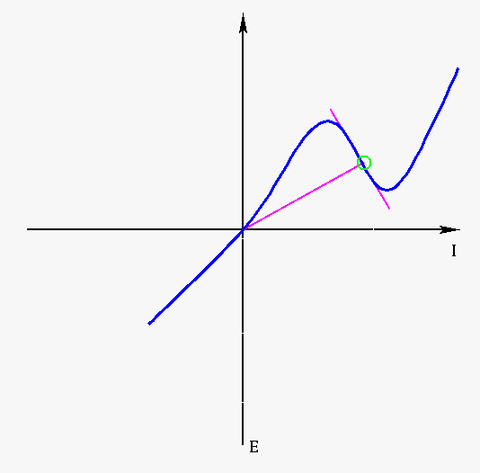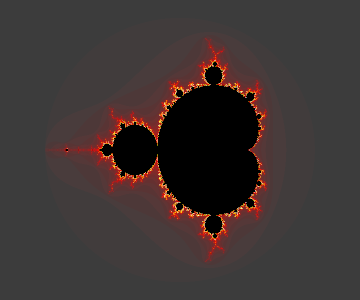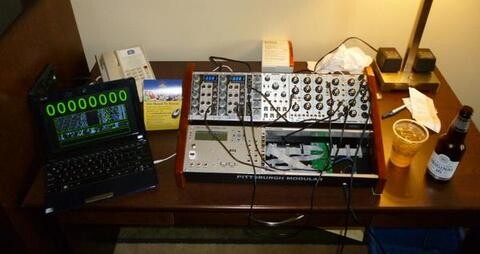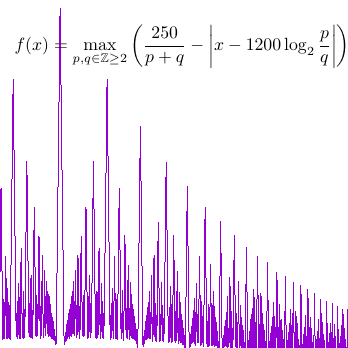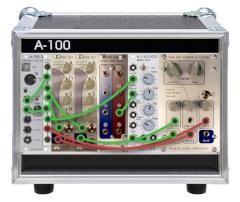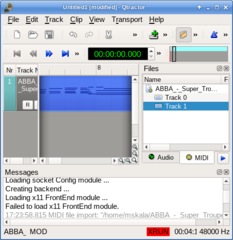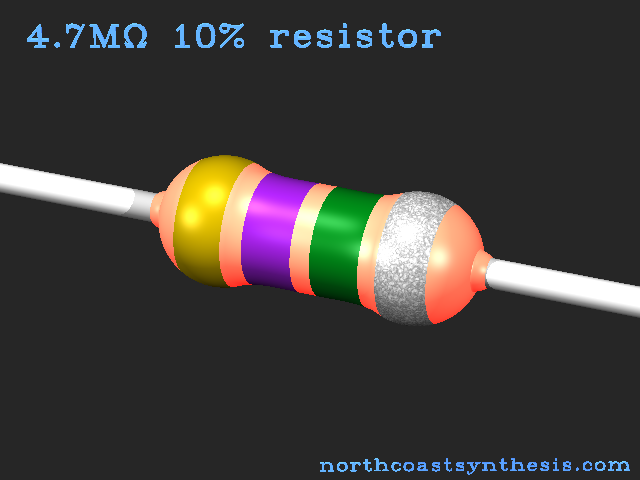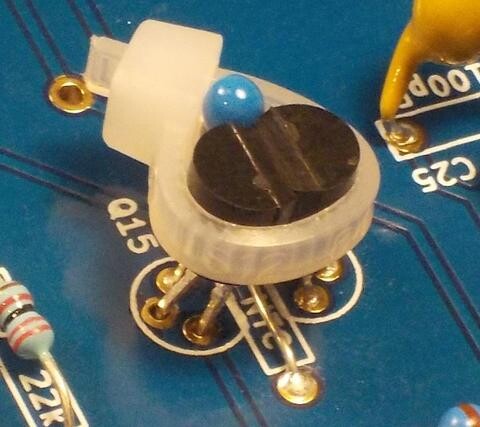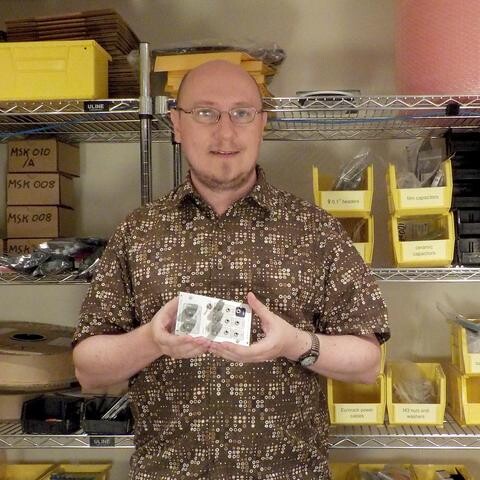Random thoughts on negative resistance
It's been an exciting week here at North Coast. Since selling out the first batch of Leapfrog filters, I've been busy making more. That's still in progress. Then just yesterday I gave a talk at Frequency Freaks, here in Toronto, and that seemed to be well-received. At least, they asked me plenty of questions. I've also been playing a lot with the Roland D-05 I got as a present for the winter holidays, trying to learn how to program it. Somewhere in the middle of all this I'm trying to make progress on the development of the next North Coast module, the MSK 011 Transistor Mixer. There's been Spectre/Meltdown mitigation to do and a move of one of my backend servers to another data centre. And I have a couple of other super secret projects on the go. READ MORE
Modular synthesis intro, part 4: Some pitfalls
This is Part 4 in a series that started with Part 1. READ MORE
Listening to the Mandelbrot set
Okay, it's New Year's Eve, I'm overdue to write this week's Web log entry, and the topic I wanted to write about is held up because of (among other things) a package that apparently was stolen from my front porch after it was "delivered" during my vacation and I told them not to mail it so early but blah blah blah... Instead of the exciting mystery topic, let's dig into the back catalog again and think about how to listen to the Mandelbrot set. READ MORE
Modular synthesis intro, part 3: How to get started
This is Part 3 in a series that started with Part 1. READ MORE
Maximizing inharmonicity
As I've said before, I'm interested in slow ambient drones - sounds that smoothly change their texture over a period of time without any sharp boundaries or beats. If you have something like this playing in the background, I want for it to never grab your attention, but when you occasionally do focus on it, you notice something different each time. In my " Totally tubular" posting last month, I talked a bit about making inharmonic bell sounds using a hardware modular synth. This week I've been playing with additive synthesis in the Csound software modular. READ MORE
Modular synthesis intro, part 2: Don't do it!
This is Part 2 in a series that started with Part 1. READ MORE
Modular Gift-Giving Guide 2017
The Solstice is rapidly approaching and I'm doing my usual routine of putting off making any plans until the very last moment, then panicking, buying a bunch of random gifts, and handing them out with little regard to who's receiving what. I've come close to the point of That's it, everybody's getting Sine Bank kits! Whether they are into SDIY or not! already a couple of times and it's only December 3rd. If, however, you would like to do things in a more careful way than I do, and if you have a modular synthesist on your list, then you may appreciate these gift suggestions. READ MORE
Modular synthesis intro, part 1: What is it?
My mother asked me to explain what I'm up to in one sentence, for inclusion in the annual Christmas Letter, and I said that I'm making electronic musical instruments. That's a pretty good summary as far as it goes. But people often want more detail on what modular synthesizers are all about, and this is the first of several postings I'm writing so that I can have a place to which I can direct the curious. It's largely based on a series of postings I made in my personal Web log about a year ago; the version here will be updated a bit to take into account subsequent developments in the modular world. READ MORE
Free MIDI software rundown
Modular synthesis involves a lot of on-the-fly experimentation with the hardware, but if you're going to make music in a preplanned way, there's a good chance you will end up involving a computer and connecting it to your modular via MIDI. Here are notes on some of the software I like to use for that and related tasks. I'm focusing on stuff that will run under Linux, but many of these packages are cross-platform. READ MORE
Ribbet!
The Leapfrog VCF does not actually go "ribbet," at least not without some effort. But after being told by one friend I showed it to that most people don't want to make real music with their modulars but just want something that goes "uuuuuuuuuuuLAAAAAAAAAAAAARGH" (which, let's face it, is true) I've added a demo highlighting that. Uulargh? Yeah, we've got this. READ MORE
Totally tubular
It's just one thing after another with the Leapfrog. I'd been hoping to have them for sale by now, and I am getting close to that point. I actually have the stock of the first batch on hand and ready to sell now. But there's still a fair bit of writing to do on the manual, final checks to make sure all the drawings are up to date, a press release to write, and so on. I'm working on an ambitious demo track with about 20 multitracks of different instrument sounds all made with the Leapfrog, and that's taking longer than I had planned, but I'm learning a lot both about the Leapfrog and about synthesis in general doing it, so I thought it would be fun to go through one of the patches I'm using. The score calls for (General MIDI) "tubular bells"; here's my take on a sound something like tubular bells made with the Leapfrog, and some notes on making bell sounds in general. READ MORE
Preferred values for resistors and capacitors
You've probably noticed that although resistors and capacitors come in many different values, some of which seem like they could be randomly chosen, there's nonetheless some sort of logic to it. You'll see power-of-ten sizes like 1kΩ, 10kΩ, 100kΩ and it's understandable that those would be "round" numbers it might be convenient to use and manufacture... but for instance there also seems to be something special about the number 47, so you see many resistor values like 4.7kΩ, 47kΩ, 470kΩ, and capacitors like 0.47µF and 470pF. Why 47? Why not 46 or 48 - especially when 47 is a prime number and 48 has many small divisors, which would seem like it might be convenient? Here are some notes on the commonly-used numbers and where they come from. READ MORE
Temperature compensation with NTC thermistors
The panel contractor says they dispatched the first production batch of MSK 007 Leapfrog VCF panels to me on Friday, and those are the last remaining physical items needed before I can launch the module; so I'm still hopeful that I can aim for a launch by the end of the month. That means I need to finish up the last few documentation items; one of them is a description of the exponential converter temperature compensation circuit, and that's an interesting enough item to be worth a Web log posting of its own. READ MORE
The Celebrated Leaping Frog
I've spent most of this week working on the second and third prototypes for the Leapfrog VCF. I'm hoping to have this product available for sale by the end of the month - maybe in time to have some kind of spooky Halloween tie-in for the launch. READ MORE
